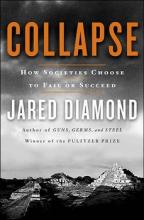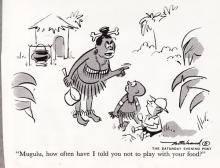Jonathon Swift joked in “A Modest Proposal” about eating a certain percentage of the babies being born. Dutch artist Gerard David painted three children jumping into a tub next to a religious figure—also a scene depicting cannibalism. A Facebook friend recently asked the time-old question, “If you were trapped on a desert island, which Facebook friend would you eat and why?”
(Predictably, the responses were more about the condiments—no one was brave enough to answer the question correctly.)
While human cannibalism conjures up images of certain Gilligan’s Island episodes and nightmares of plane crashes gone wrong, it’s interesting to learn about the history and practicality of cannibalism. In a crunch, eating a human might actually be healthier than you might think. Here’s one of the grosser statistics that I’ve read on the “eatability”—sorry for the made-up word—of people by other people.
“One pair of anthropologists, for example, actually crunched the numbers, concluding that the average human adult provides 66 pounds of edible food, including fat, connective tissue, muscle, organs, blood, and skin. Protein-rich blood clots and marrow are said (by the rare connoisseur) to be special treats.”
If humans are edible and provide nutritious value, why aren’t there more examples in history of humans eating humans? I apologize for the ick-factor in this post, which is extremely high. Jared Diamond’s “Collapse”, an evaluation of why societies fall, offers a couple examples of cannibals. One interesting (and admittedly pretty gross) example of cannibalism in the book is that of the Ansazi who ate the bodies of enemies killed in war or ate relatives who had died of natural causes. Diamond states that there are anthropologists who refuse to believe that the Ansazi were cannibals, but contends that the evidence on the side of cannibalism is too strong.
As fair warning, if you were too disgusted or otherwise disturbed by the last quote about cannibalism, you will not like this quote from “Collapse” about the site of a war raid.
“The most direct sign of cannibalism at the site that dried human feces, found in the house’s hearth and still well-preserved after nearly a thousand years in that dry climate, proved to contain human muscle protein, which is absent from normal human feces, even from the feces of people with injured and bleeding intestines. This makes it probable that whoever attacked that site, killed the inhabitants, cracked open their bones, boiled their flesh in their pots, scattered the bones, and relieved himself or herself by depositing feces in that hearth had actually consumed the flesh of his or her victims.”
The more recent example of cannibalism that comes to mind is even more disturbing—again this is not a topic for the faint of heart or overly-squeamish—a German weirdo advertised for someone to first cut off his penis, then kill him, and then eat him. He actually found a willing participant to be his killer/eater. The penis was cut, flambéed, and eaten. Later the same evening, the man’s throat was slit and his flesh was eaten over the course of the next few months. (40 pounds of it anyway.) The cannibal was prosecuted for murder, but at the time couldn’t be prosecuted for cannibalism, which wasn’t a crime in Germany.
The Donner Party, which is the most infamous cannibalism story in the United States, is now being questioned by at least one anthropologist who came out in April stating that there wasn’t any cannibalism there. Unlike the earlier story I cited from “Collapse”, anthropologists didn’t find any evidence that were human bones in the Donner hearth that was recently analyzed. (The Donner Party, for those who might not know, was a group of 84 people who were trapped together in the Appalachians.)
http://history.howstuffworks.com/historians/cannibalism.htm









